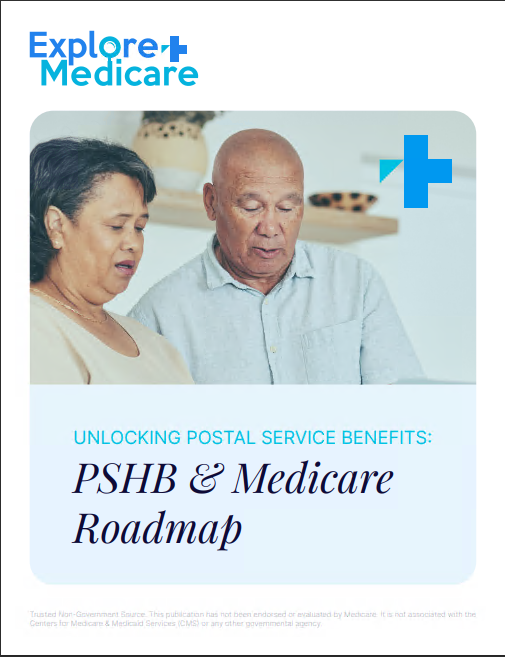Key Takeaways
-
Medicare does not cover all of your health care expenses, which can leave you responsible for deductibles, copayments, and coinsurance.
-
A Medicare Supplement plan helps cover these out-of-pocket costs and offers greater predictability in your healthcare spending.
Original Medicare: What It Does and Doesn’t Cover
If you’re enrolled in Medicare in 2025, you likely know that it consists of two primary parts: Part A for hospital coverage and Part B for medical services. These parts provide essential healthcare coverage, but they also come with cost-sharing requirements that you’re expected to handle yourself.
Here’s what Original Medicare includes:
-
Part A generally covers inpatient hospital care, skilled nursing facility care, hospice, and some home health services. While most people pay no premium for Part A, there is a deductible for each benefit period, and you may owe daily coinsurance for extended hospital stays.
-
Part B covers doctor visits, outpatient care, preventive services, and durable medical equipment. You pay a monthly premium and are responsible for an annual deductible and 20% coinsurance for most services.
What it doesn’t cover:
-
Prescription drugs (you need Part D or other drug coverage)
-
Most dental, vision, and hearing services
-
Long-term custodial care
-
Overseas emergency medical care
That means you’re still on the hook for a significant portion of your healthcare costs, even with Medicare. This is where a Medicare Supplement plan can step in.
Why Gaps in Medicare Matter More Than You Think
While Original Medicare offers strong foundational coverage, its gaps can result in unpredictable costs, especially if your health needs increase.
Consider these scenarios:
-
If you are hospitalized multiple times in a year, you could pay the Part A deductible of $1,676 per benefit period more than once.
-
For outpatient treatments or doctor visits under Part B, you are responsible for 20% of the cost, which adds up quickly without an out-of-pocket maximum.
Unlike many other health insurance plans, Original Medicare does not place a cap on your annual spending. That means your financial exposure could be significant during a serious illness or injury.
How a Supplement Plan Eases the Financial Burden
A Medicare Supplement plan, also known as Medigap, is designed to help you cover those out-of-pocket costs left by Original Medicare.
These plans can help with:
-
Part A coinsurance and hospital costs beyond the 60-day mark
-
Part B coinsurance or copayments
-
First three pints of blood for a transfusion
-
Part A hospice care coinsurance
-
Skilled nursing facility care coinsurance
-
Part A and Part B deductibles (depending on the plan you choose)
-
Emergency medical care during foreign travel (up to plan limits)
By covering these costs, a Supplement plan allows you to plan your healthcare expenses more easily and avoid surprise bills. In 2025, this kind of predictability matters more than ever as healthcare costs continue to climb.
You Still Need to Be Enrolled in Medicare First
To qualify for a Medicare Supplement plan, you must already be enrolled in both Medicare Part A and Part B. You cannot use a Supplement plan with a Medicare Advantage plan or for services not approved by Medicare.
The best time to sign up for a Medicare Supplement plan is during your Medigap Open Enrollment Period. This six-month window starts when you are both 65 or older and enrolled in Part B. During this time, you can buy any plan available in your area without being subject to medical underwriting. Once this period ends, you could be denied coverage or charged more due to your health history.
Comparing Out-of-Pocket Costs With and Without a Supplement
Let’s take a closer look at how a Supplement plan impacts your healthcare budget. While we won’t dive into specific plan premiums, we can highlight the cost patterns you may experience in 2025.
Without a Supplement Plan:
-
You pay the Part A deductible each benefit period ($1,676 in 2025)
-
You pay 20% of most Part B services
-
No out-of-pocket maximum limits your exposure
With a Supplement Plan:
-
Many out-of-pocket costs like coinsurance and deductibles are covered (depending on plan type)
-
You gain greater financial predictability
-
You still pay your Part B premium, plus the Supplement plan premium
Over the course of a year, these differences could be significant, especially if you face hospital stays, surgeries, or chronic care needs.
Traveling? A Supplement Plan Can Help With That Too
Original Medicare provides limited or no coverage for healthcare services received outside the United States. Some Medicare Supplement plans offer foreign travel emergency coverage up to plan limits.
This benefit can help pay for emergency medical care if you become ill or injured while abroad. Typically, the plan covers 80% of the cost after you meet a small deductible, up to a lifetime limit.
If travel is a part of your lifestyle or you frequently visit family in other countries, this added protection may be worth considering.
What Medicare Supplement Plans Don’t Cover
While Supplement plans fill in many gaps, they don’t cover everything. It’s important to set realistic expectations.
Most Medicare Supplement plans do not include:
-
Prescription drug coverage (you’ll need a separate Part D plan)
-
Routine dental, vision, and hearing care
-
Long-term custodial care
-
Private-duty nursing or personal care assistance
You’ll want to explore additional coverage options for these needs. Many people pair a Supplement plan with a standalone Part D drug plan and other specialized policies to round out their coverage.
Choosing the Right Supplement Plan for Your Needs
In 2025, there are several standardized Supplement plan options to choose from, each labeled with a letter (Plan A, B, D, G, K, L, M, and N). These plans are standardized, meaning Plan G offers the same benefits no matter which insurance company provides it.
When evaluating your options, consider:
-
Your current and expected healthcare usage
-
Your ability to pay out-of-pocket costs if they arise
-
Whether you travel often and want foreign emergency care
-
Your comfort level with paying a premium for more complete coverage
Also, keep in mind that not all plans are available in every state, and your eligibility may vary if you’re under 65.
Annual Reviews: Why Reassessing Your Plan Is Essential
Even if you already have a Medicare Supplement plan, it’s a good idea to review your coverage annually. While the plans themselves do not change benefits year to year, your health status, lifestyle, or financial situation might.
Set a reminder to:
-
Evaluate how often you used your plan last year
-
Review any changes to your prescription drug needs
-
Consider whether additional coverage is needed for dental, vision, or hearing
-
Check if your plan still fits your travel patterns and provider preferences
Healthcare is not static, and your insurance shouldn’t be either. Periodic reviews help ensure you are protected, without paying for coverage you no longer use.
Gaps Don’t Have to Be Gaps Forever
Medicare gives you essential healthcare coverage, but it doesn’t cover everything. The gaps in cost-sharing and coverage limitations are real, and they can become expensive. Fortunately, a Medicare Supplement plan helps bridge those gaps and adds stability to your healthcare budget.
Whether you’re new to Medicare or looking to reassess your current plan, consider what’s missing in your coverage and how a Supplement plan could fill in those blanks.
Speak with a licensed agent listed on this website to get expert guidance tailored to your situation.









